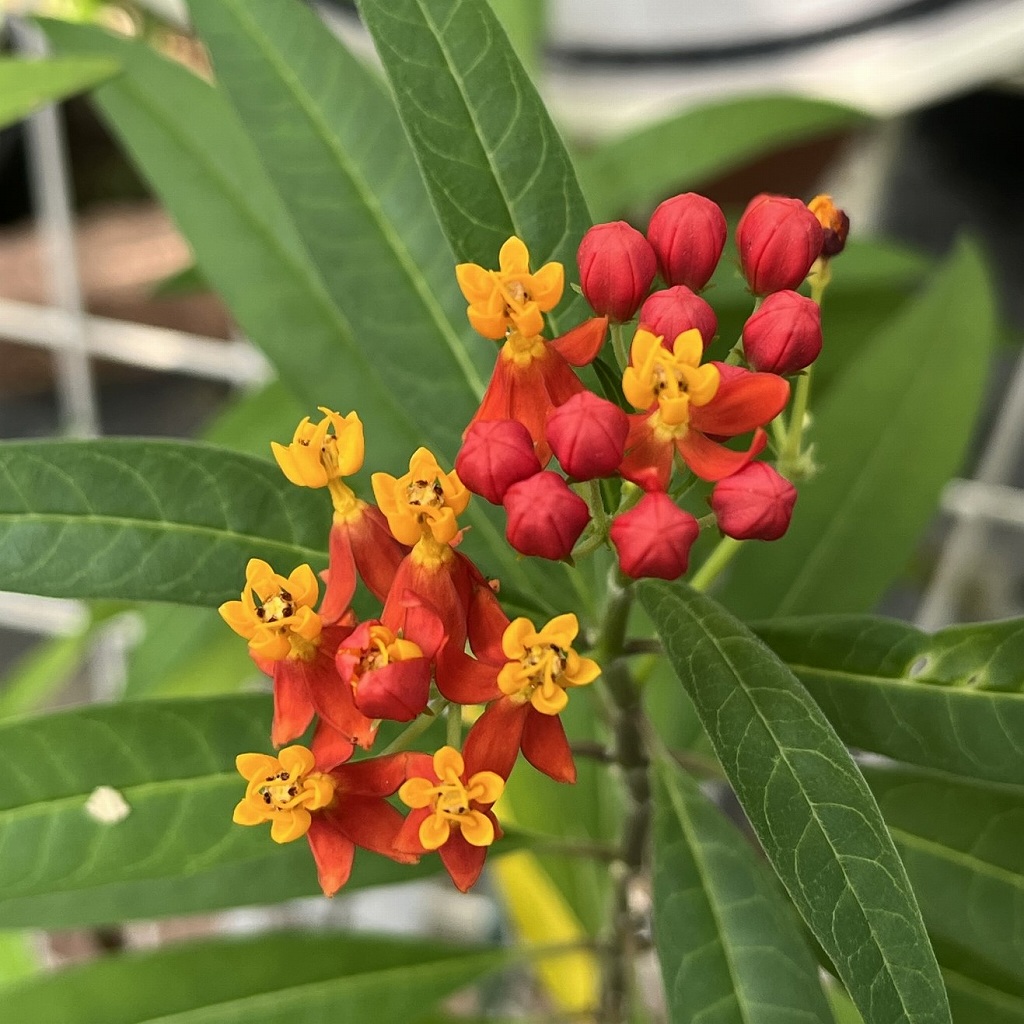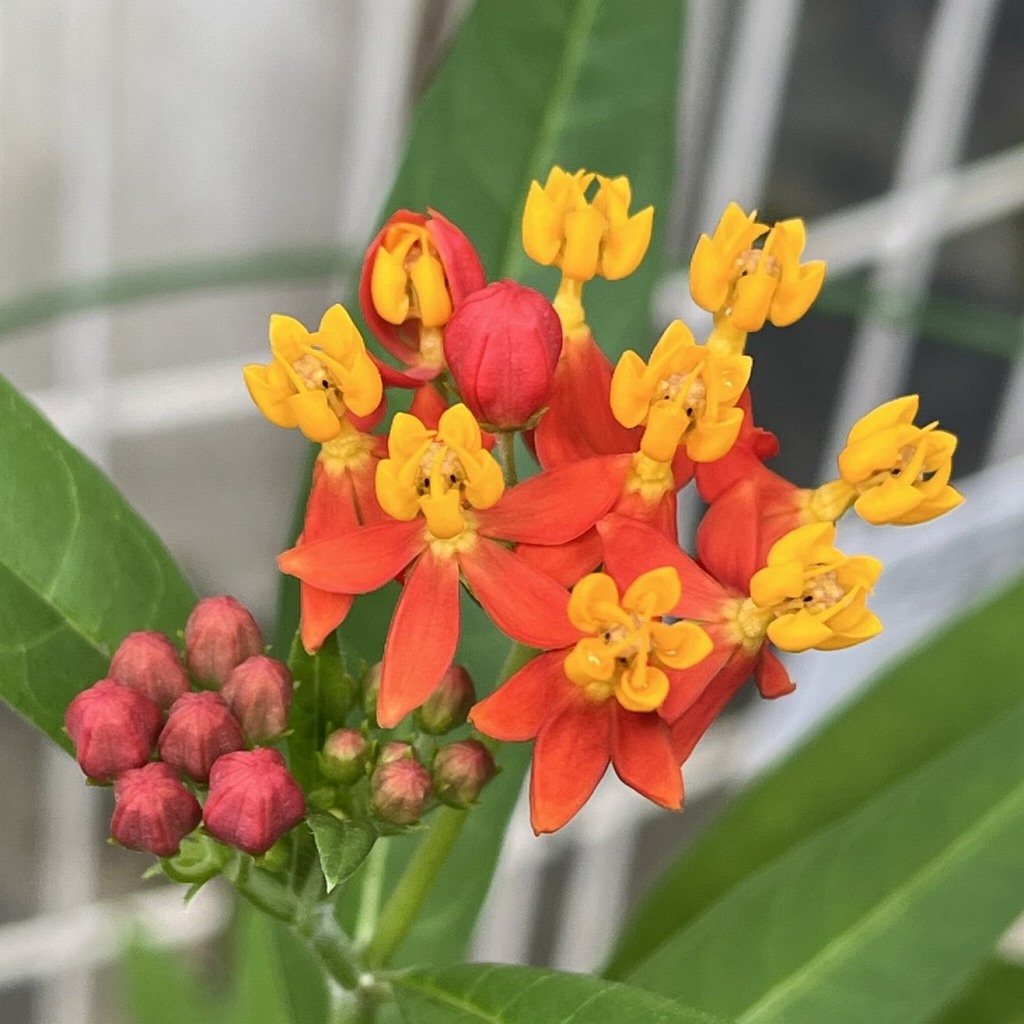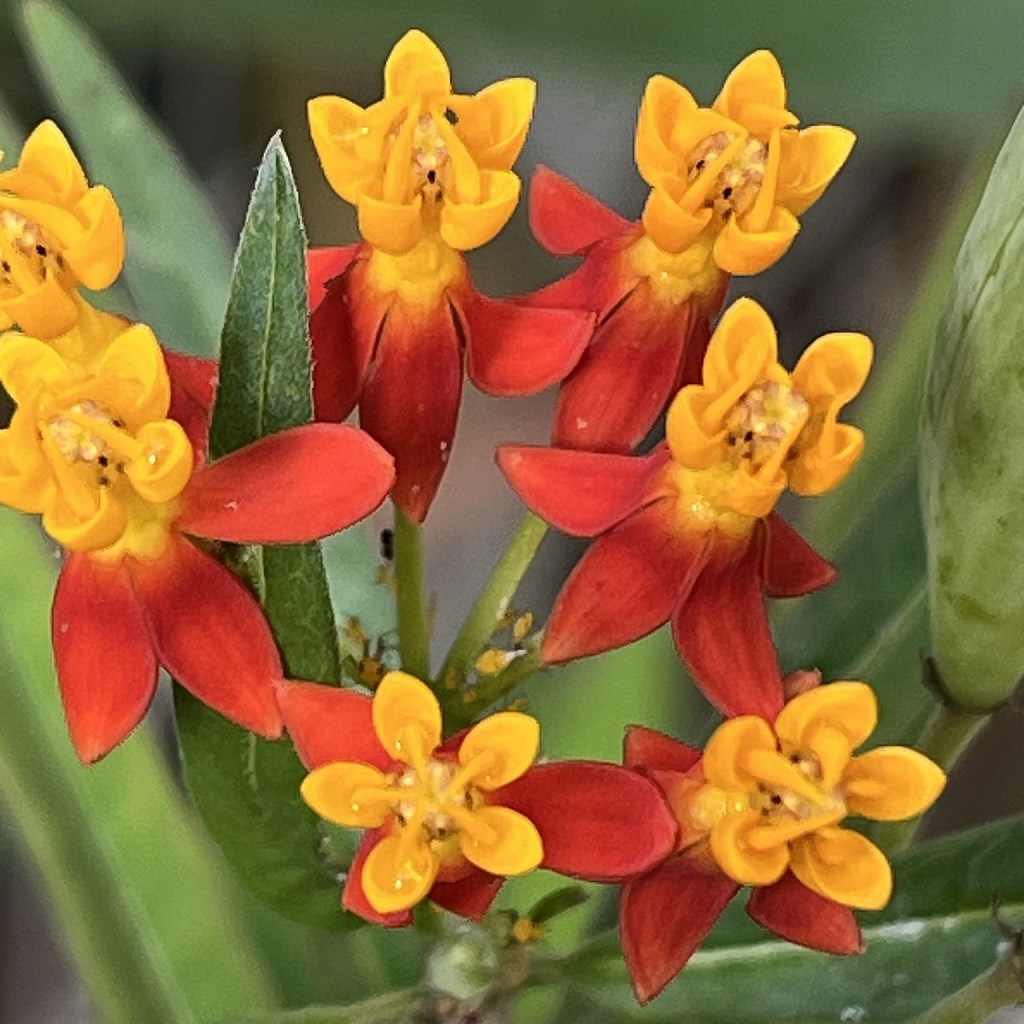トウワタの英名ミルクウィードは「乳の草」という意味で茎や葉を傷つけると白色の汁が出るから。花が蜜に富み、多くの蝶を引き寄せます。
Tropical Milkweed’s English name comes from the white sap that comes out when the stems and leaves are damaged. The flowers are rich in nectar and attract many butterflies.
【仮名】トウワタ, アスクレピアス
【和名】唐綿
【英名】Tropical Milkweed, Blood Flower, Cotton Bush
【学名】Asclepias curassavica
【誕生】07/ 18, 09/ 11
【開花】04, 05, 06, 07, 08, 09月
【花色】Red, Yellow, Orange




トウワタ
トウワタの概要
トウワタはキョウチクトウ科の多年草または1年草。原産地は中南米で、日本へは江戸時代末期に渡来しました。おもな品種は花冠が赤色、副花冠が黄色の「レッド・バタフライ」のほか、花冠も副花冠も黄色の「シルキー・ゴールド」など。花が蜜に富み、多くの蝶を引き寄せます。
トウワタの名前
トウワタの和名は「唐」が外来を、「綿」が種子に生える冠毛を表します。英名ミルクウィードは「乳の草」という意味で、茎や葉を傷つけると白色の汁が出るから。ラテン語の属名アスクレピアスはギリシャ神話に登場する医者に、種小名クラサビカはカリブ海の島国に由来します。
トウワタの姿形
トウワタの茎は叢生して木質化し、葉は対生して披針形。花は小さく、茎先に集まって咲きます。花冠が5つに裂けて反り返り、副花冠が5つに分かれて蜜を湛え、雄しべと雌しべが合着して蕊柱に。花後は紡錘形の袋果を結び、熟すと裂けて、長い絹毛の生えた種子を風に乗せます。
トウワタの近縁
トウワタの近縁種「柳唐綿」は葉が細長く、茎を傷つけて滲み出る汁が透明。寒さに強く、日本でも冬が越せるので「宿根唐綿」とも呼ばれます。大正時代の末期に渡来。「大唐綿」は葉幅が広く、花が鞠状に集まって咲きます。明治時代の中ごろに渡来。いずれも原産地は北米です。
トウワタの利用
トウワタは生薬の「蓮生桂子花」や「蓮生桂子草根」になり、気管支炎、扁桃腺炎、乳腺炎などに用いられました。全草に強心配糖体「アスクレピン」を含有。発汗、駆虫、止血、催吐などの薬理作用がある一方、嘔吐、不整脈、心臓麻痺などの中毒症状を引き起こす恐れがあります。
Tropical Milkweed
Introduction of Tropical Milkweed
Tropical Milkweed is a perennial or annual plant of the Apocynaceae family. It is native to Central and South America, and was introduced to Japan at the end of the Edo period. The main varieties include “Red Butterfly,” which has a red corolla and yellow subcorollas, and “Silky Gold,” which has both yellow corollas and subcorollas. The flowers are rich in nectar and attract many butterflies.
Name of Tropical Milkweed
The Japanese name of Tropical Milkweed means “foreign cotton,” and this cotton refers to the hairs that grow on the seeds. The English name comes from the fact that when the stems and leaves are damaged, a white sap is released. The Latin genus name Asclepias comes from a doctor who appears in Greek mythology, and the species name curassavica comes from the Caribbean island nation.
Shape of Tropical Milkweed
The stems of Tropical Milkweed are dense and woody, and the leaves are lanceolate and opposite. The flowers are small and bloom in clusters at the tip of the stem. The corolla splits into five parts and curves back, the subcorolla splits into five parts and fills with nectar, and the stamens and pistils unite to form a column. After flowering, the fruit forms a spindle-shaped bag, which splits open when ripe, releasing seeds with long silky hairs on the wind.
Relatives of Tropical Milkweed
“Tuberosa”, a species closely related to Tropical Milkweed, has long, slender leaves, and the juice that oozes out from damaged stems is transparent. It is resistant to cold and can survive winter even in Japan. It was introduced at the end of the Taisho era. “Syriaca” has wide leaves and flowers clustered together in a ball shape. It was introduced in the middle of the Meiji period. Both are native to North America.
Use of Tropical Milkweed
Tropical Milkweed became a herbal medicine and was used to treat bronchitis, tonsillitis, mastitis, etc. It contains the cardiac glycoside “asklepine” in the whole plant. While it has pharmacological effects such as sweating, deworming, hemostasis, and emesis, it can also cause toxic symptoms such as vomiting, arrhythmia, and heart failure.


